 ReactionTimeExperiment
ReactionTimeExperiment
|
|||||||
| PREV CLASS NEXT CLASS | FRAMES NO FRAMES | ||||||
| SUMMARY: NESTED | FIELD | CONSTR | METHOD | DETAIL: FIELD | CONSTR | METHOD | ||||||
java.lang.ObjectReactionTimeExperiment
public class ReactionTimeExperiment
Click here for instructions on launching/running the application.

The default parameter settings are read from a configuration file called
ReactionTimeExperiment.cfg. The default parameter settings may be changed through
the setup dialog. The setup parameters are as follows:
Parameter Description Participant Code Identifies the current participant. This is used in forming the names for the output data files. Also, the sd2 output data file includes a column with the participant code.
Block Code Identifies the block for the current sequences of trials
Number of Trials Sets the number of trials for the current launched of the program Mode Sets the reaction time operation, as described below. The final entry is for "Visual Search". If this mode is selected, radio buttons are activated to selected the number items to search (1, 2, 4, 8, 16, or 32).
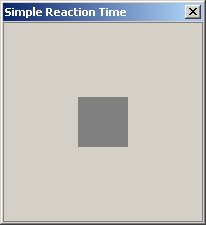
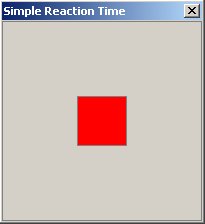
A window appears containing a grey box in the centre. This is the initial stimulus. After a delay, the box turns red whereupon the user presses a key as quickly as possible. Any key may be pressed.
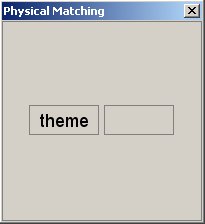

The initial stimulus is a five-letter word. After a delay, the second stimulus appears. The second stimulus is also a five-letter word. Both words are presented in lowercase. If the second word matches the first, the user presses "f" or "j" on the keyboard. If the second word does not match the first, any other key is pressed.
For each trial, there is a 50% probability of a match. For trials in a block, half are match trials and half are no-match trials.
A reasonable procedure for this mode (and the others below) is to instruct participants to position their dominant hand on the home row of the system keyboard. Left-handed users can press "f" with the index finger for a match, or "d" with the middle finger for no-match. Right-handed users can press "j" with the index finger for a match or "k" with the middle finger for no-match. See below:
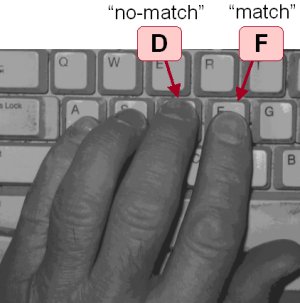
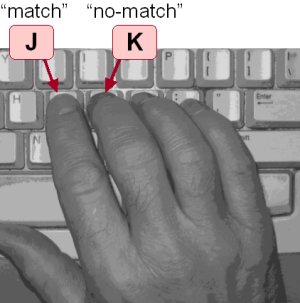
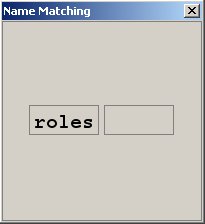
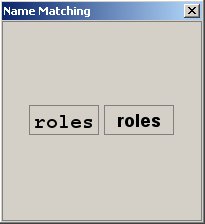
Name matching is the same as physical matching except the words may appear in uppercase or lowercase, monospaced or sans serif, plain or bold, 18 point or 20 point. A match is deemed to occur if the words are the same, regardless of the look.
For each trial, there is a 50% probability of a match. For trials in a block, half are match trials and half are no-match trials.
Name matching takes longer than physical matching because an extra cognitive operation is required to deduce equivalence (see Card et al., 1983, p. 69).

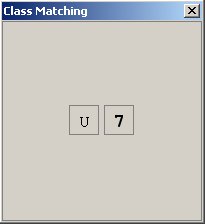
The initial stimulus contains a letter or digit. After a delay a second stimulus appears also containing a letter or digit. The font is monospaced or sans serif, plain or italic, 18 pt or 20 pt. A match is deemed to occur if both symbols are of the same class; that is, both are letters or both are digits.
To avoid confusion, 0 (digit) and O (letter) are not included, nor are 1 (digit) and I (letter).
For each trial, there is a 50% probability of a match. For trials in a block, half are match trials and half are no-match trials.
Class matching takes longer than name matching because "the user has to make multiple references to long-term memory" (Card et al., 1983, p. 70).
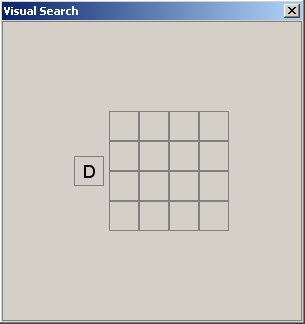

The visual search mode requires specifying through the setup dialog a search space of 1, 2, 4, 8, 16, or 32 items. (A choice of 16 is shown in the above screen snap.)
The initial stimulus contains a letter. After a delay the squares in the search space are populated with letters selected a random. A match is deemed to occur if the initial letter appears in the search space.
For each trial, there is a 50% probability of a match. For trials in a block, half are match trials and half are no-match trials.
Note that visual searching with n = 1 is the same as physical matching. As implemented here, the only difference is that the physical matching mode uses five-letter words whereas the visual searching mode uses single letters.
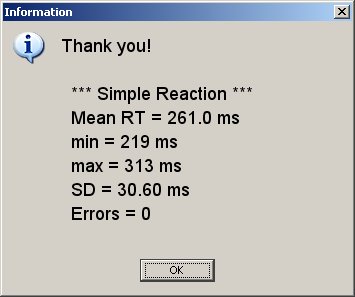
The data are saved in two output files. An "sd1" file contains the data on a per-trial basis. An "sd2" file contains summary data for the block. The data corresponding to the above dialog are as follows:
SD1 data file:
time,313,265,219,234,250,250,313,250,250,266
SD2 data file:
Participant,Block,Mode,mean,min,max,sd
P00,B00,SR,261.0,219,313,30.597748646301124
The data files are more elaborate for the other modes, since two different keys are used and the possibility of errors exists. Furthermore, the reaction times may be different depending on whether or not a match occurred. This is particularly true for the visual search mode, since deducing no-match requires an exhaustive search whereas deducing a match only requires a partial search. (The search ends when the letter is found.) An example of the results for the visual search mode with n = 16 follows.

SD1 data file:
times,2188,1078,1187,1156,1313,1656,1782,1875,1391,1734,
keys,k,k,k,k,j,j,k,k,j,k,
match,0,1,0,0,1,1,0,1,1,0,
errors,0,1,0,0,0,0,0,1,0,0,
SD2 data file:
Participant,Block,Mode,Number_of_Items,total_time,total_errors,total_match_time,n_match,n_match_errors,total_no-match_time,n_no-match,n_no-match_errors
P00,B00,VS,16,15360.0,2,7313.0,5,2,8047.0,5,0

Thus, the measurement includes both the time to react and the time to move the finger to a button and press down the button. Videotaped analyses using VirtualDub reveal typically 10 frames from the first movement of the finger to the dispatch of the button-down event. At 60 frames/s, this is equivalent to 167 ms ±16.7 ms:

This may be important, depending on how the data from this software are interpreted. For example, reaction time is typically defined as the time between the occurrence of a stimulus and the initiation of a response assigned to it (Posner and Fitts, 1986, p. 95). If the objective is to measure reaction time alone, then it is important to bear in mind that the measurements include the time for a key press — about 167 ms.
| Constructor Summary | |
|---|---|
ReactionTimeExperiment()
|
|
| Method Summary | |
|---|---|
static void |
main(java.lang.String[] args)
|
| Methods inherited from class java.lang.Object |
|---|
equals, getClass, hashCode, notify, notifyAll, toString, wait, wait, wait |
| Constructor Detail |
|---|
public ReactionTimeExperiment()
| Method Detail |
|---|
public static void main(java.lang.String[] args)
|
|||||||
| PREV CLASS NEXT CLASS | FRAMES NO FRAMES | ||||||
| SUMMARY: NESTED | FIELD | CONSTR | METHOD | DETAIL: FIELD | CONSTR | METHOD | ||||||